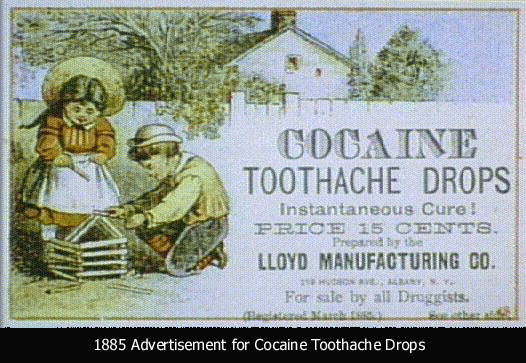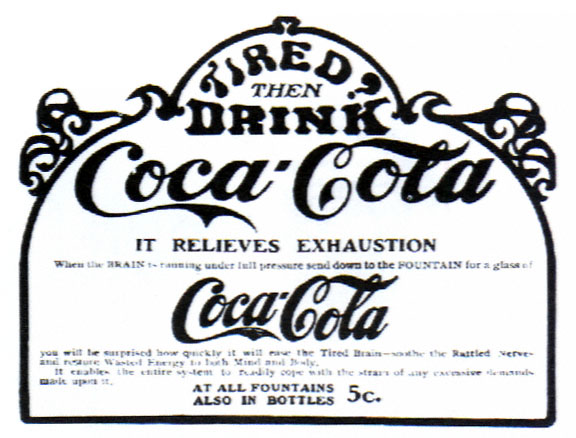| Andean Indians have long chewed leaves of the coca plant to decrease hunger and increase their stamina for work. Chewing the leaves produces no high. Cocaine was first extracted from coca in the 19th cent. and was at first hailed as a miracle drug, being the first ever discovered local anaesthetic. By the 1880s in the United States it was freely prescribed by physicians for such cases as exhaustion, depression, and morphine addiction (and even droplets for sore teeth! (see advertisement below)) and became available in many patent medicines . After users and physicians began to realize its dangers and highly addictive nature, various regulations were enacted and its subsequent usage decreased. |

| Cocaine was originally a vital ingredient in "Coca cola", hence the name, and until its addictive characteristics were discovered, it remained in the drink (see below). Eventually caffeine replaced it as a much weaker (and safer!) stimulant. However, today Coca cola is not designed to be a relief from exhaustion as it was originally, and has been replaced by such drinks as "Red Bull" (which contains many times the amount of caffeine compared to Coca cola and also includes further (legal!) stimulants such as Taurine). |

| A cocaine epidemic began in the United States in the 1970s and peaked in the mid-1980s. With this epidemic and its accompanying crack epidemic (beginning in 1985 and peaking in 1988) violence in local neighbourhoods increased dramatically to the point where large fractions of young people with few other opportunities were lured by the power and money of being crack dealers. By the late 1990s the cocaine and crack epidemic had subsided as heroin regained popularity among illicit drug users. However to this date there is a large amount of illegal cocaine usage occuring in both the States and the UK, and the trafficking of this drug has become a powerful world-wide trade, producing many hundreds of millions of pounds a year. |